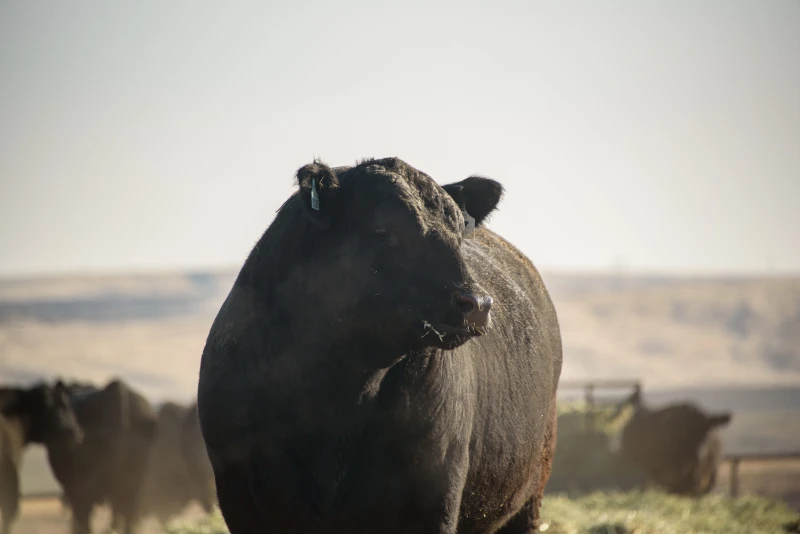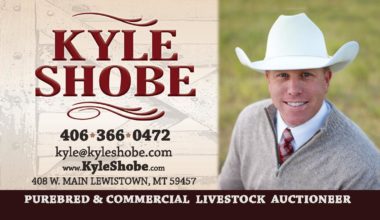Mature bull nutrition requirements depend on body condition score and time of year.
Dr. Phillip Lancaster and Dr. Brad White share some tips for feeding mature bulls to maintain condition and to make sure they are ready for the breeding season.
“We need to manage the nutrition on mature bulls to promote as much fertility as we can because we know when things go wrong it can be really bad,” White says. “Even just maintaining and making sure those bulls are ready for the next breeding season is important.”
Lancaster says producers need to ask themselves a few questions about the way they manage bulls.
- What forages are you using?
- Are you checking body condition score a couple times a year to make sure bulls are ready for breeding season?
- What is your mineral source? Are you providing bulls free-choice minerals or does he get forgotten after he’s separated from the cows?
Nutrition requirements for mature bulls depends on their body condition score and which part of the year it is.
Mature bulls can be maintained with less quality forages, depending on body condition.
“For bulls that just need to be maintained and that are not growing anymore, I can use forages that are below 50% TDN,” Lancaster says. “They may need a little protein supplement because generally those forages are going to be low in protein, but I’m going to be able to maintain that bull with some very low-quality forages. Now if I get in situations where he has to increase his maintenance requirements because of weather, I might need a better forage source.”
Pre-breeding season nutrition
Lancaster suggests increasing the quality of a bull diet about 3 months before breeding season to make sure he’s in good body condition.
“I want him a little over conditioned because I do expect him to lose some body condition during breeding season,” he says.
For spring-calving herds, if weather conditions have been adverse, a bull may have lost condition coming through the winter. To gain a body condition score, Lancaster gives a rough estimate of 150-lb. gain for a 2,000-lb. bull over 90 days.
“He only needs to gain a little over half a pound a day,” he says.
This is why planning and monitoring is important, White adds.
“If I only have 30 days to increase a body condition score, that is going to be more difficult,” he says. “I’d rather be planning ahead and gradually putting the gain on him.”
There is a balance of too little or too much condition.
“You also don’t want him to get too fat that he kind of gets lazy and can’t do his job as well,” Lancaster says. “There’s an optimum, but the optimum for him is higher than our optimum for a mature cow.”
Post-breeding season nutrition
Making sure that bulls regain body weight after the breeding season shouldn’t be too difficult especially for a spring-calving herd.
“You’re going to pull him out probably somewhere around early July,” Lancaster says. “He’s got the 2 to 3 months of good pasture left as long as you’ve got extra pasture to put him in. He should be able to regain weight on pasture alone. If you do have to dry lot him then you might need to either give him a little bit of supplement or you need to give him a more moderate-quality hay as opposed to lower quality hay.”
Lancaster estimates intake to be around 2 to 2 1/2 percent of his body weight, which is about 30 to 40 lbs. of dry matter per day.
Mineral supplementation
“Minerals like zinc, copper, manganese and selenium are important for fertility, so bulls need good sources of those,” Lancaster says. “There is some work out there in mature bulls that says mineral availability is important, not just the amount they consume, but how much is bioavailable and able to be utilized.”
Two different forms of minerals are available including organic and inorganic.
“If you read the label there will be a mineral and amino acid complex or proteinate,” Lancaster explains. “That mineral is complexed with an amino acid or a protein and it’s an organic compound that the mineral is associated with. It increases the absorption of that mineral.”
Inorganic sources will include chloride, sulfate or oxide on the label, he adds.
“Usually they’re usually less expensive, but depending on the mineral they can be less available to the animal and have less absorption,” according to Lancaster. In general, the organic forms are equal to or greater in bioavailability than the inorganic forms.”
It’s important to be aware antagonists in the forage or water bulls are consuming can create issues with mineral absorption.
“For example, we can have high levels of sulfur in water or forage that can reduce the absorption of selenium,” Lancaster explains. “We can have sulfur and molybdenum concentrations that are high in the forage that create in the rumen these compounds that we called thiomolybdates that bind copper and so then the copper is not as available. If we’re in one of those situations where we have those antagonists in our forage or in our water then an organic mineral can help increase the bioavailability of those minerals in the presence of those antagonists and so that’s a situation where they can be very useful.”
Typically bulls are used 2 to 3 months, once or twice a year, depending on the breeding seasons. While tempting to not think about minerals during that time, Lancaster recommends year-round supplementation.
“I would definitely keep him on some mineral year-round and if I’m in one of those situations where there’s an antagonist then I probably need to use an organic mineral or I need to use a special mineral to increase the amounts that I’m feeding so that I can kind of bypass those antagonists.”
Mineral supplementation also affects sperm production, which usually takes 8 to 10 weeks.
“We need to make sure that we’re getting good mineral into that bull probably starting at least 3 months before the breeding season so that his sperm production and his fertility is going be optimal by the time that he gets turned out with cows,” Lancaster says.
SOURCE/Photo: Drovers Maggie Malson, March 19, 2025








